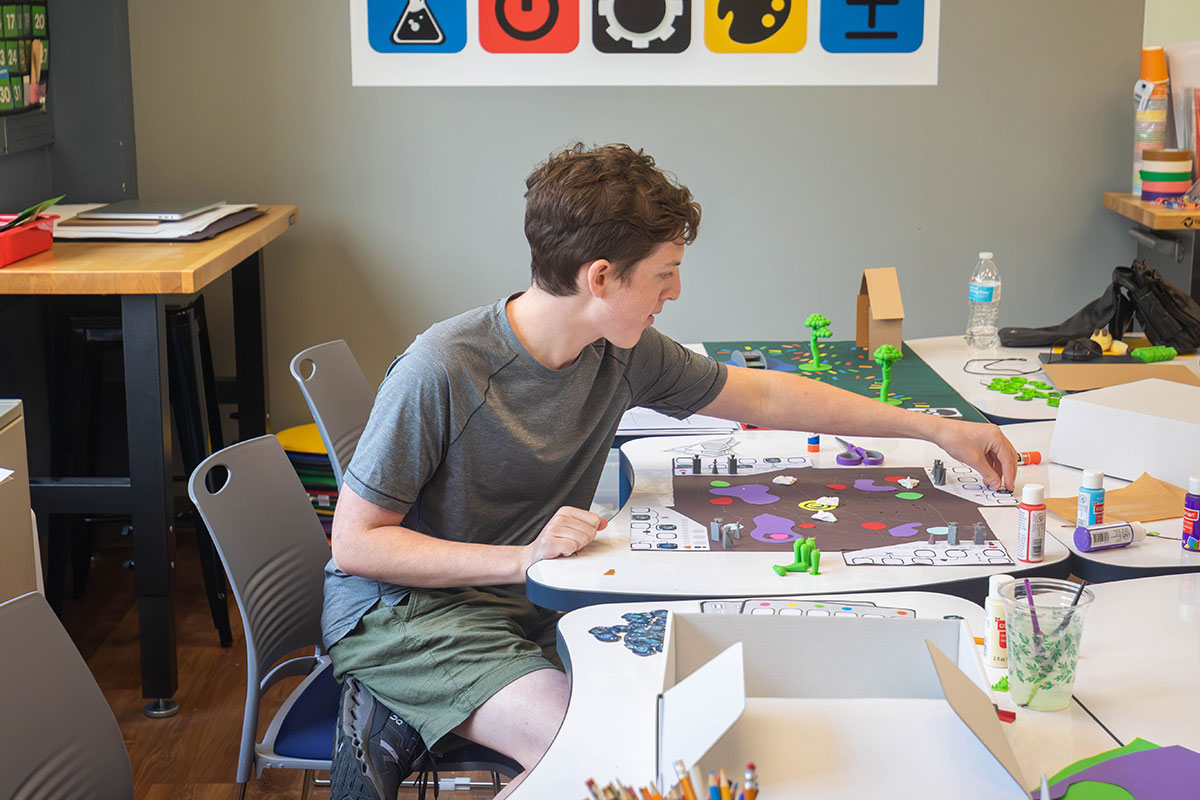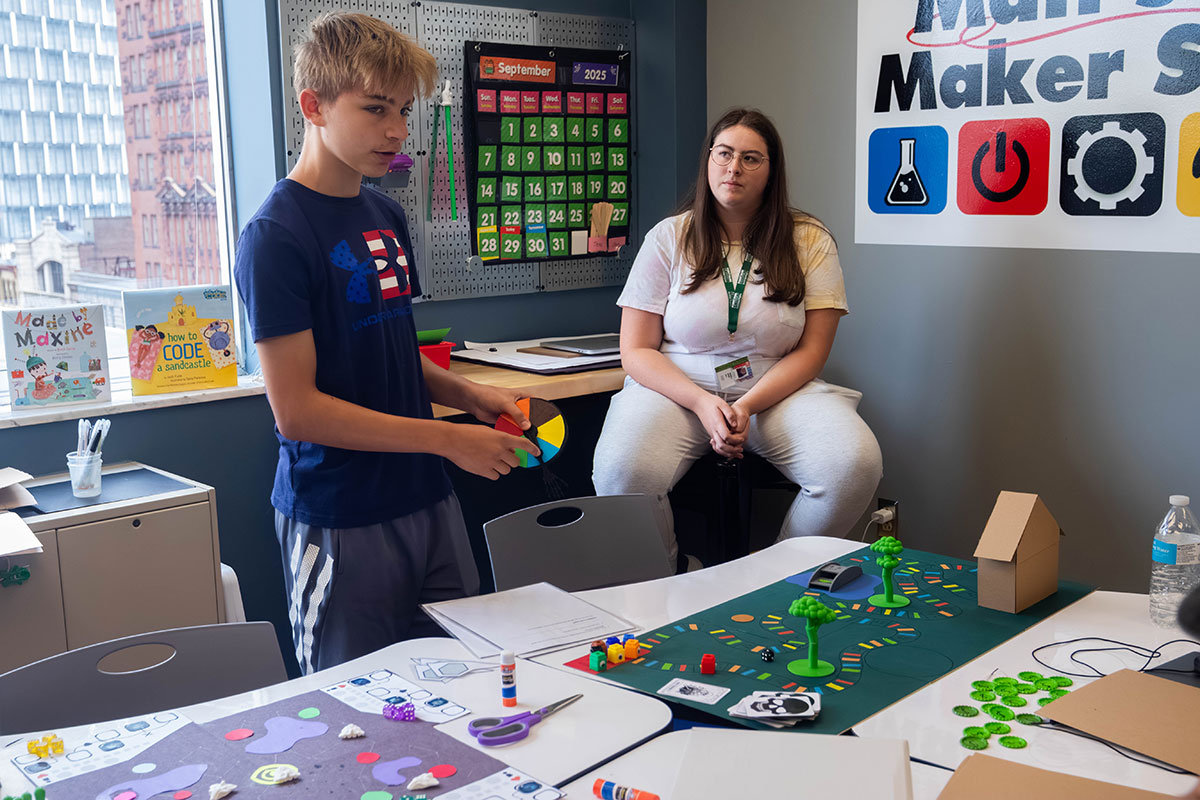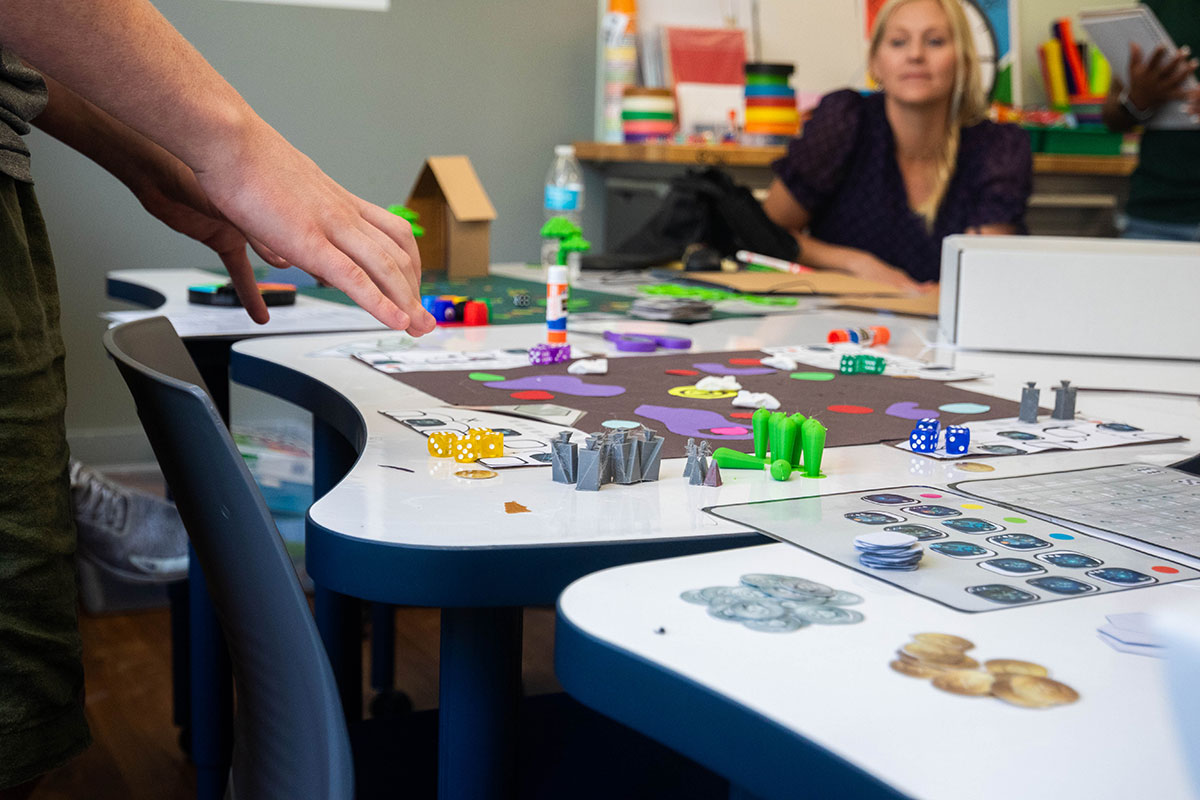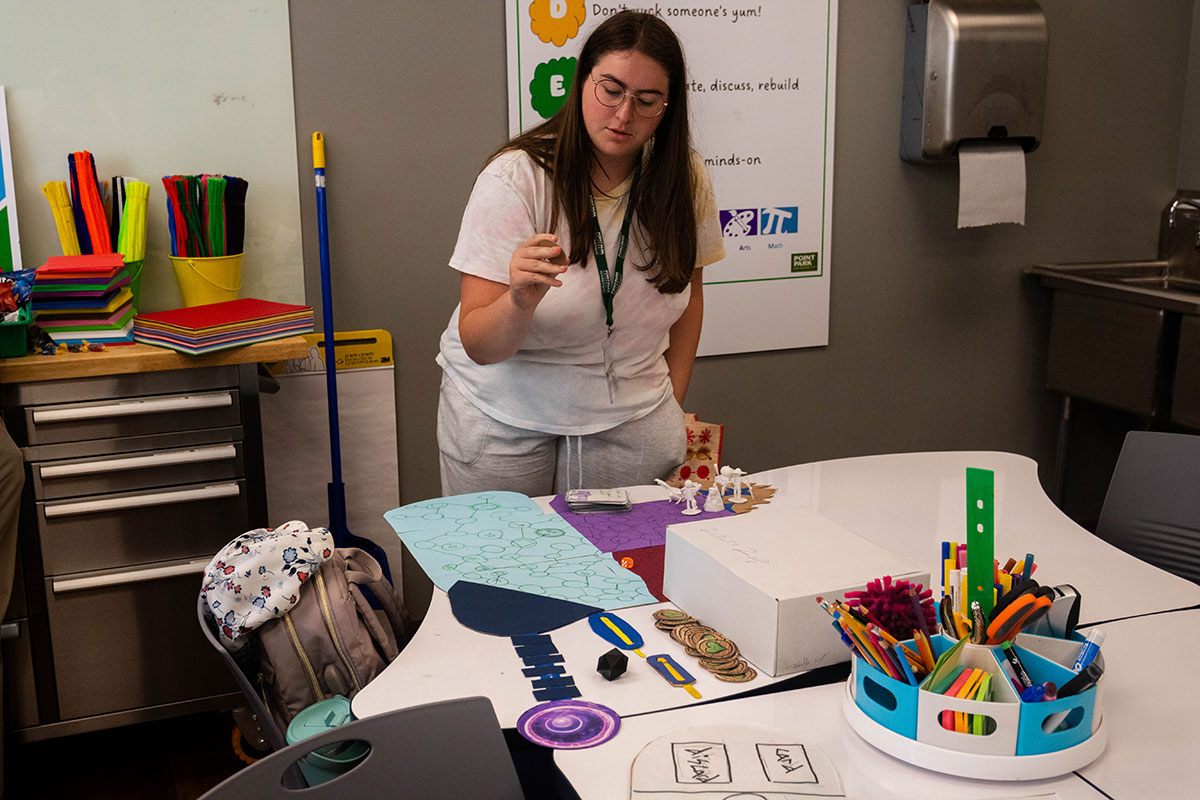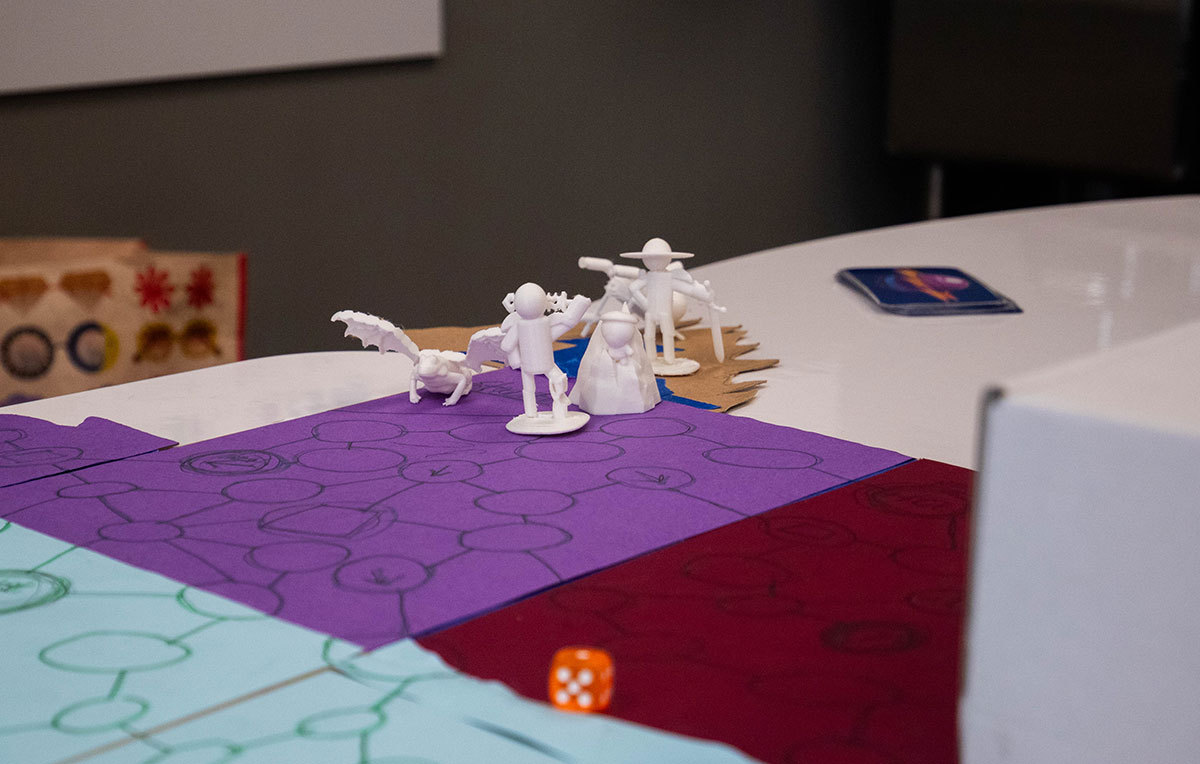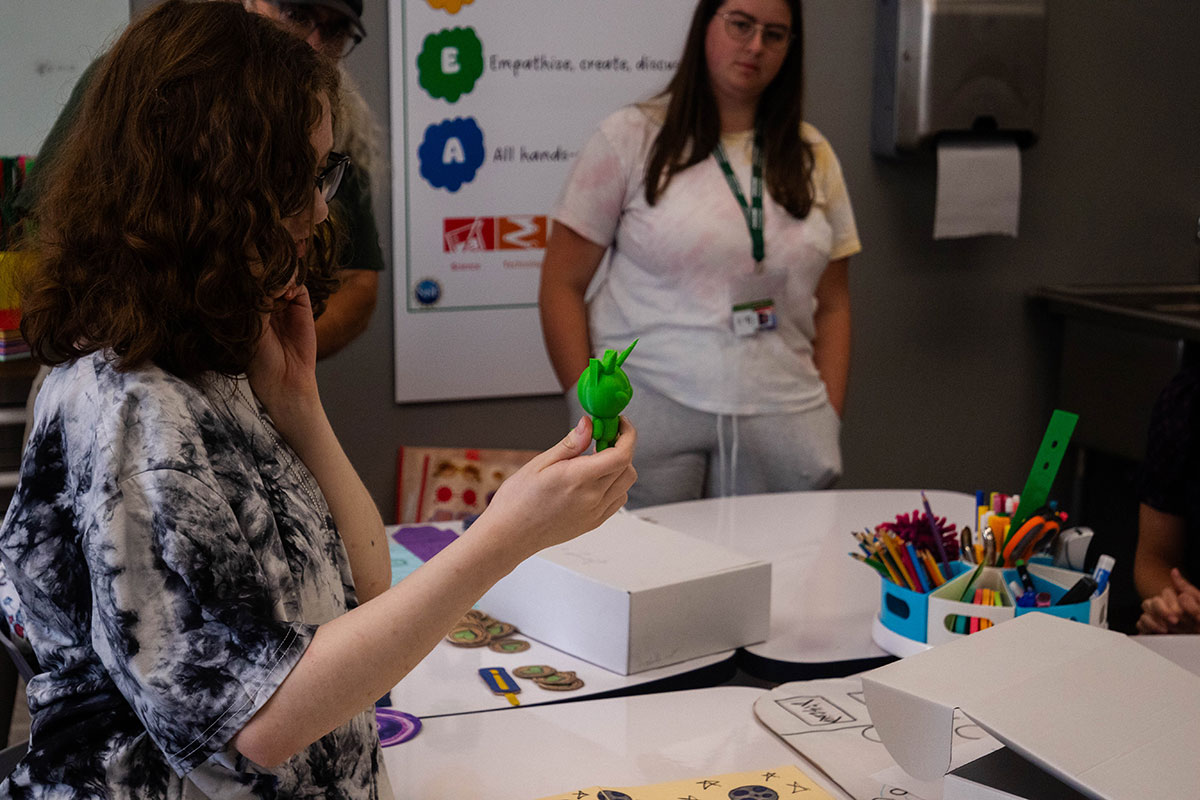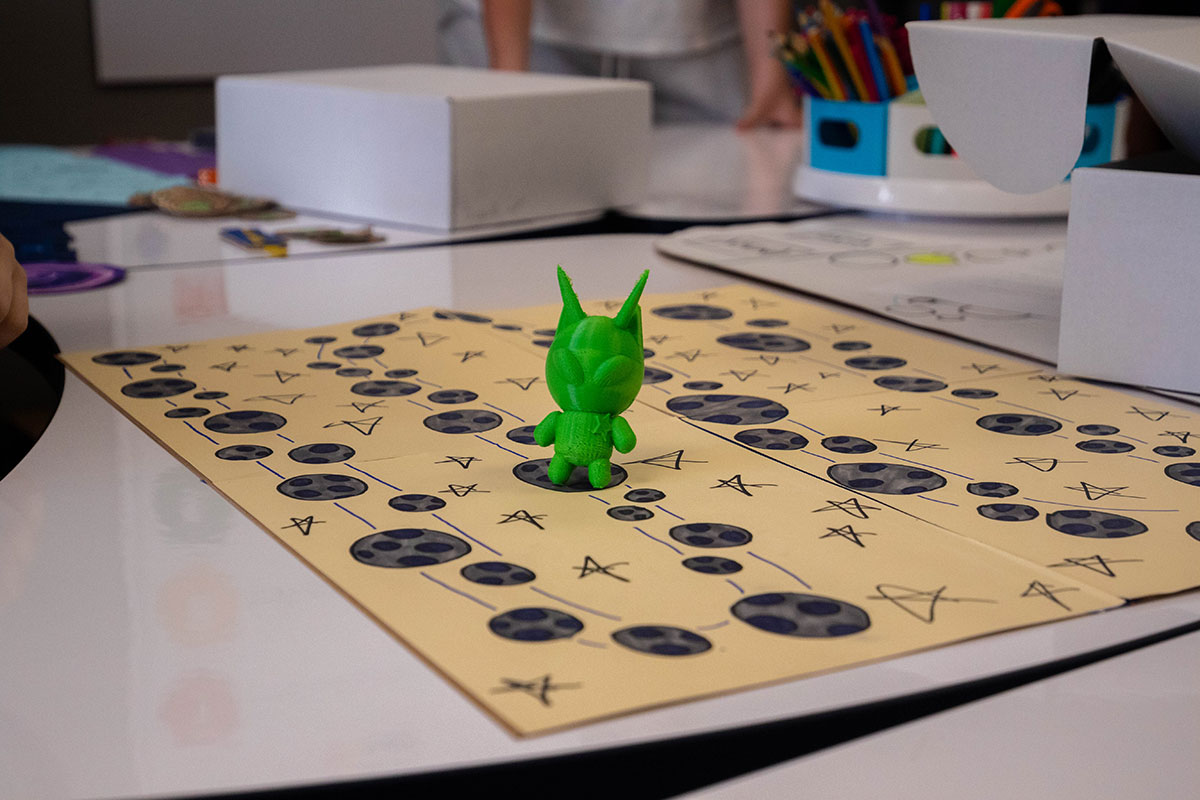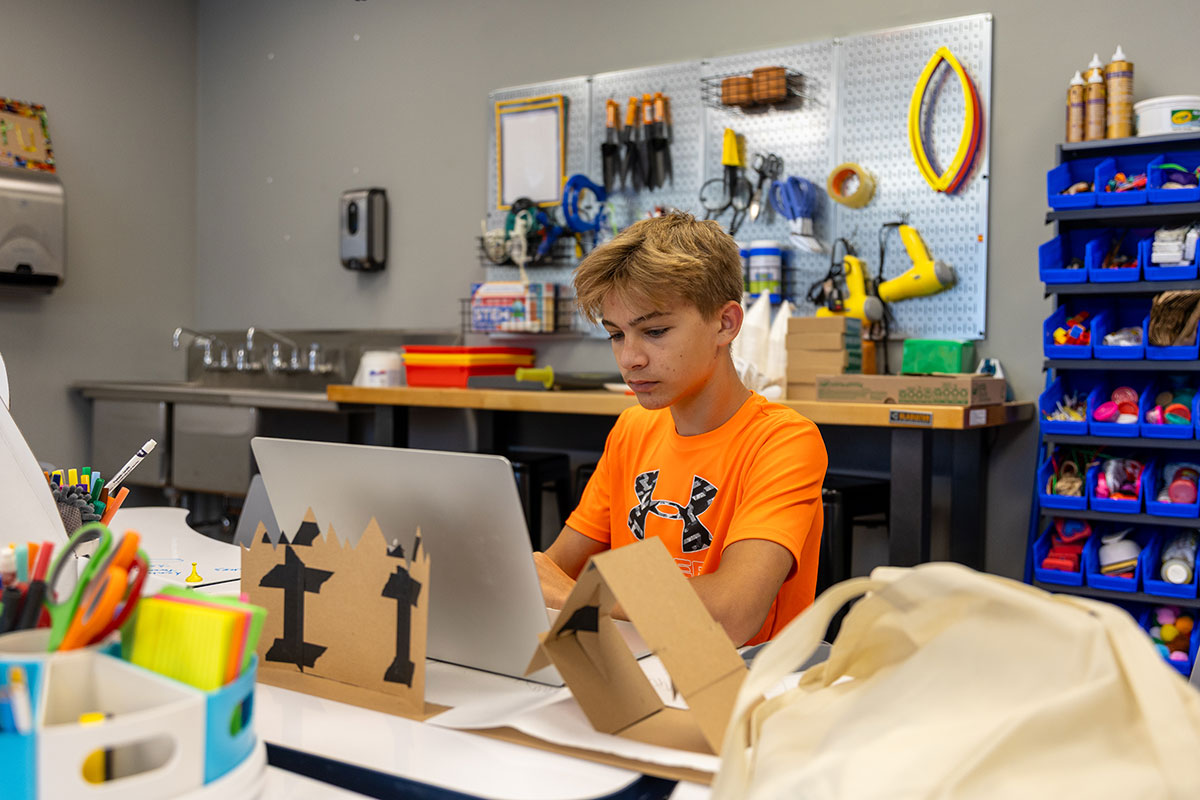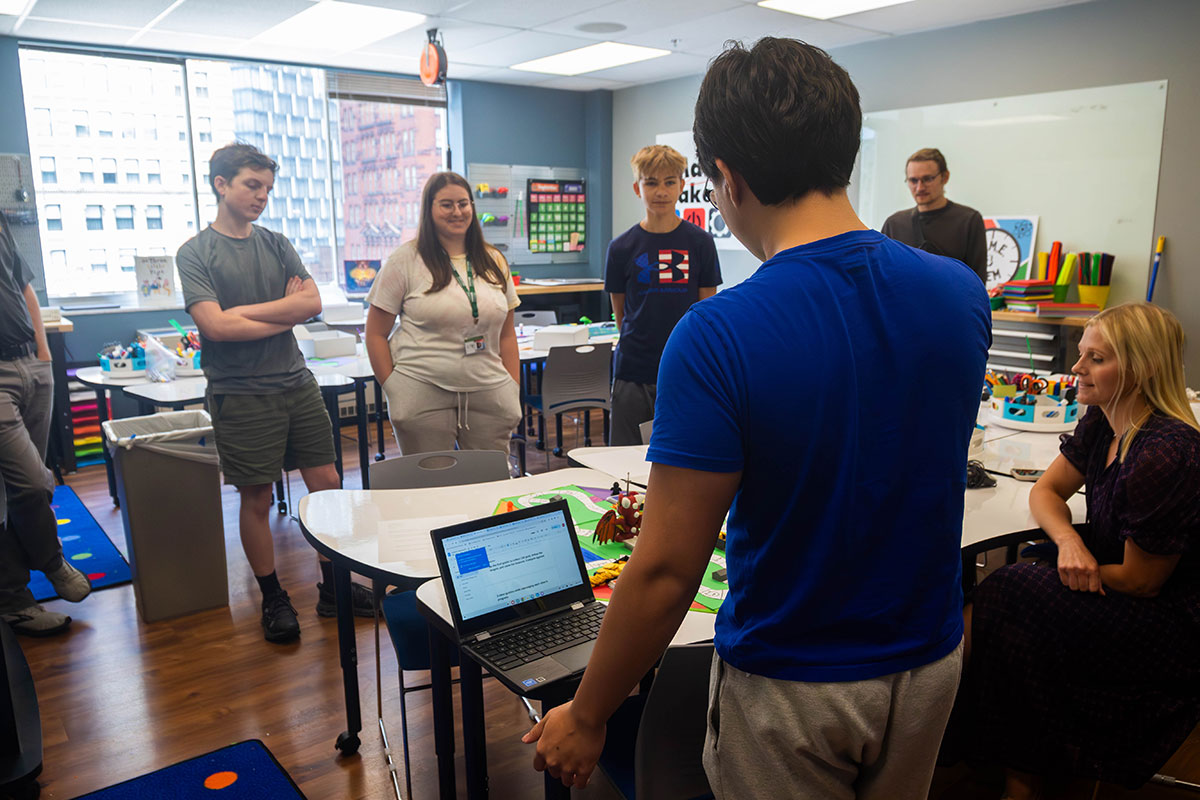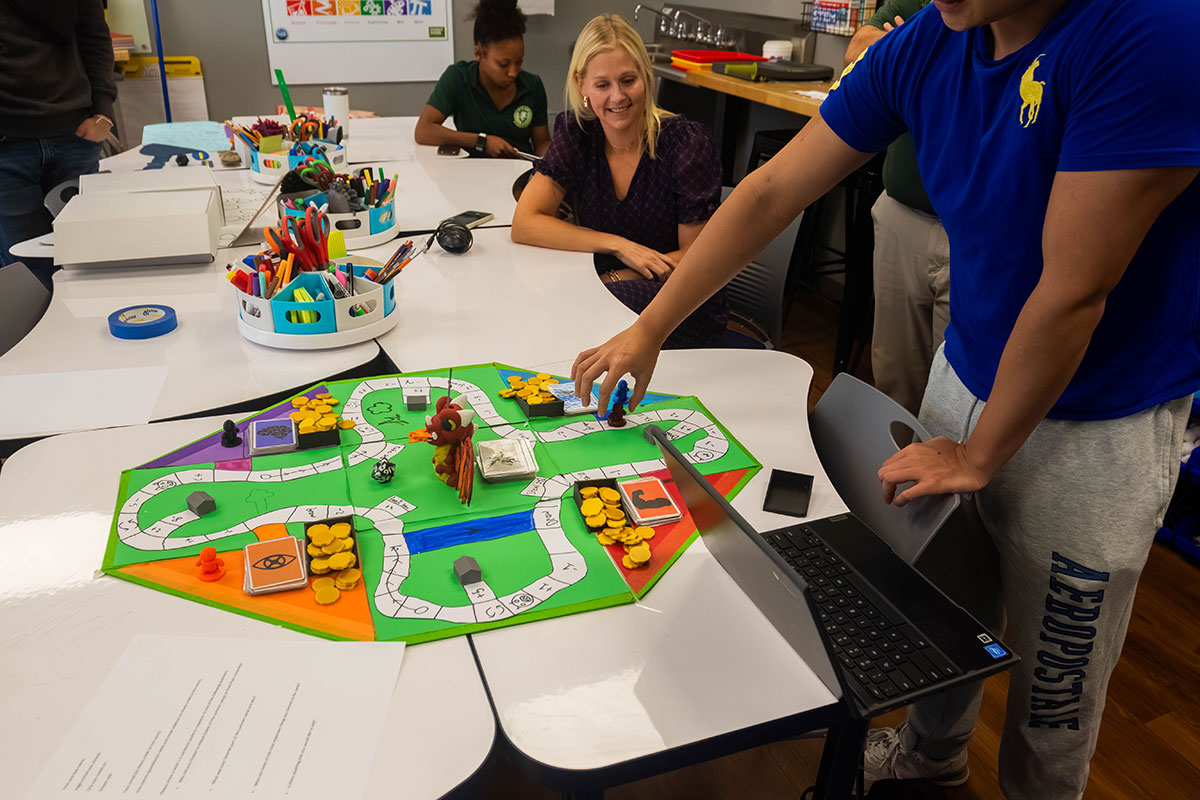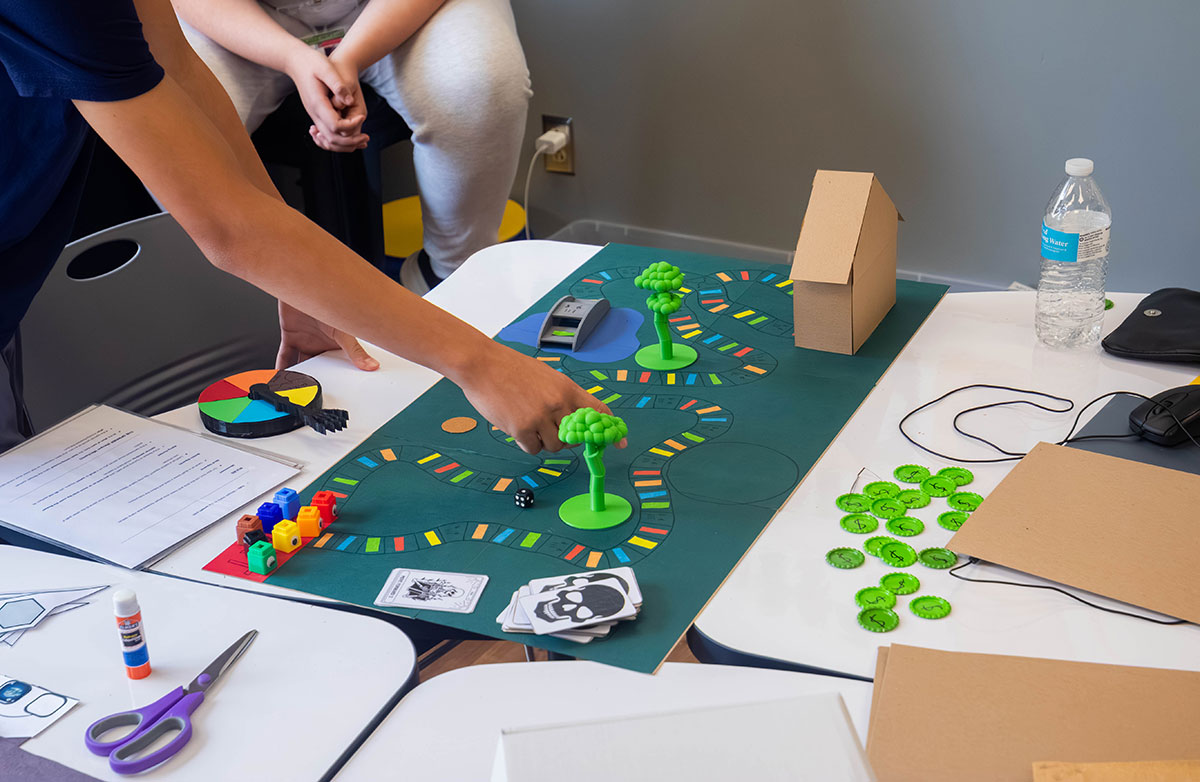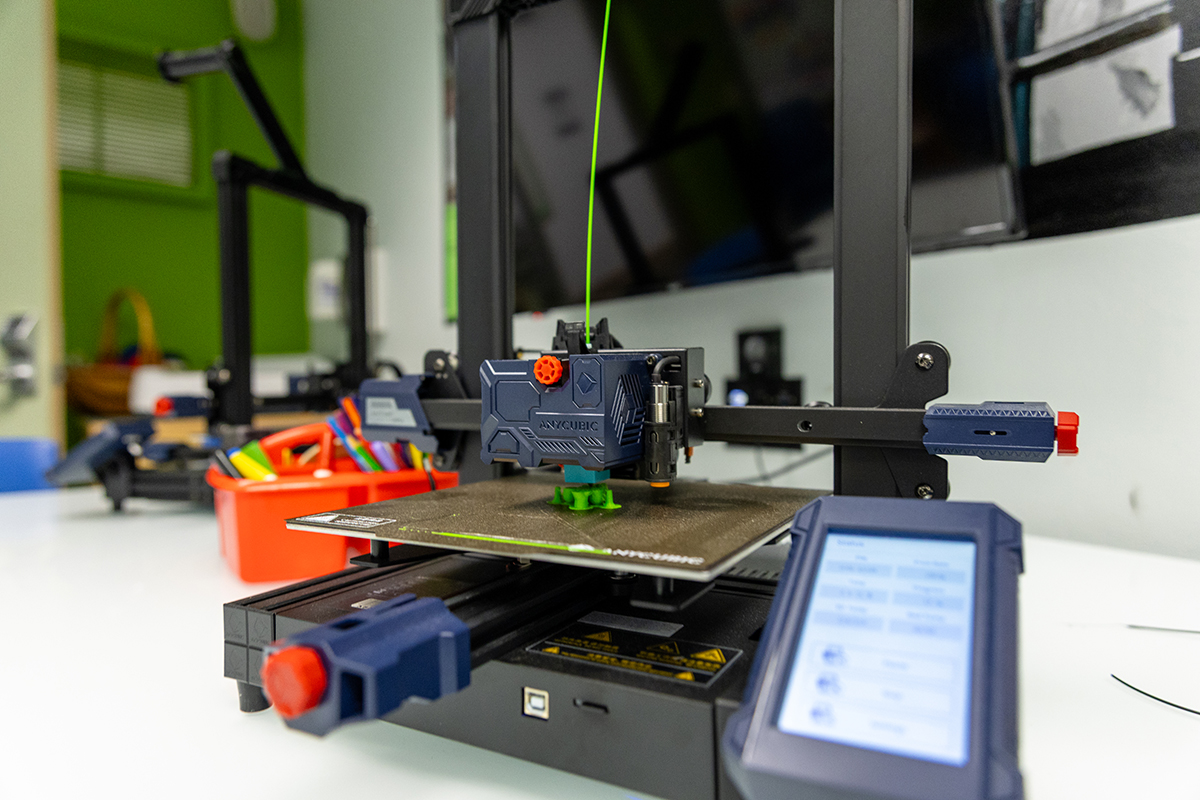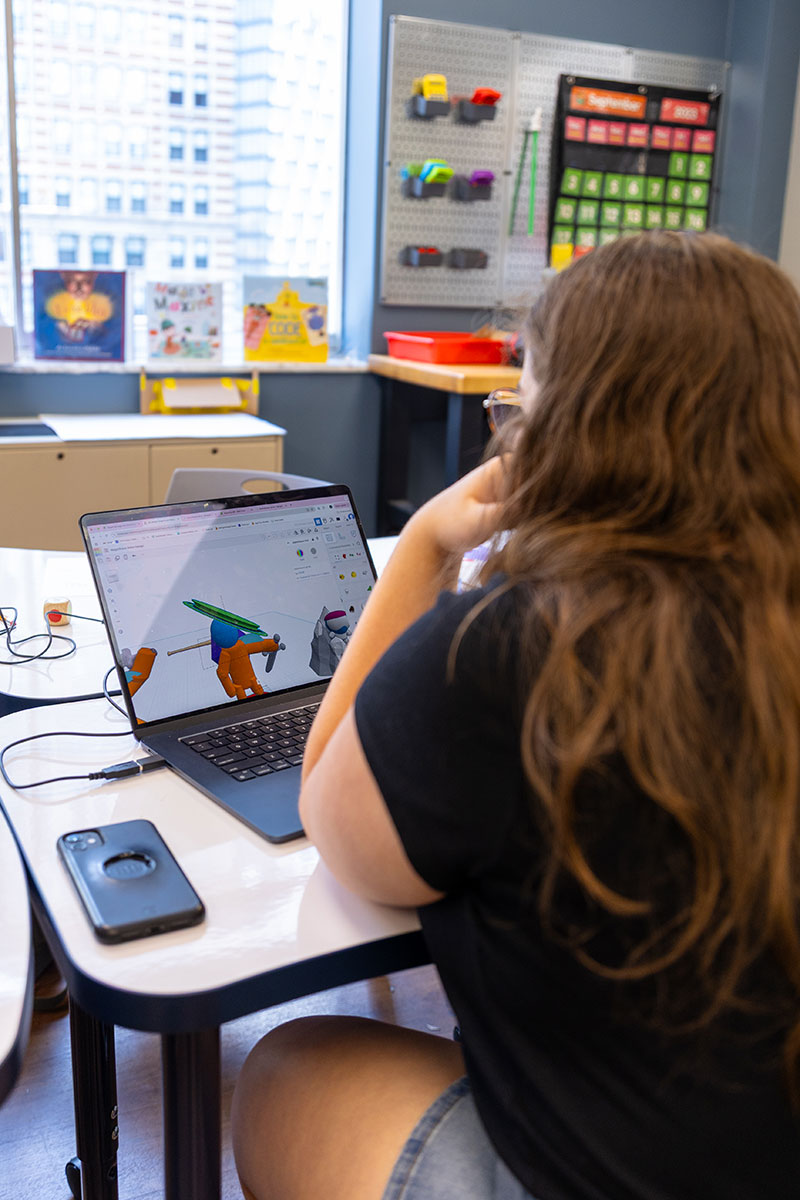Students Become Game Designers at Inaugural STEAM Design & Engineering Camp Monday, August 11, 2025
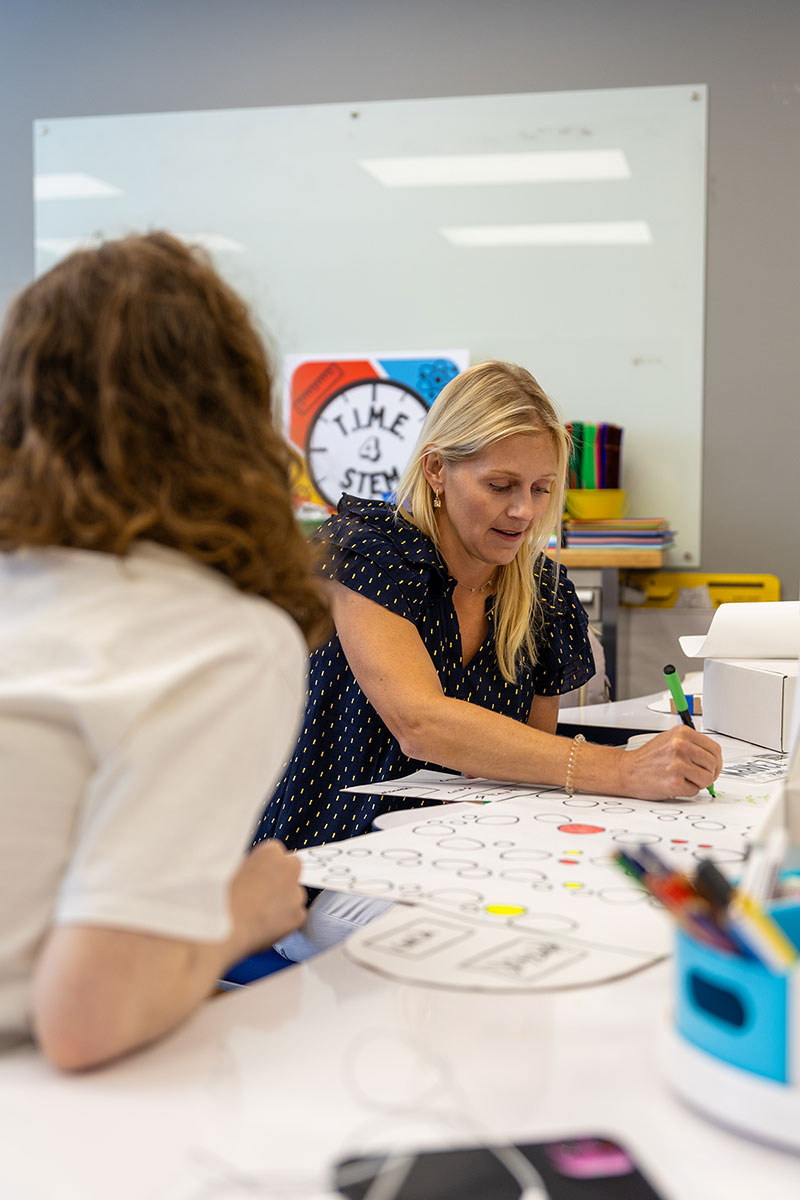
“The camp fostered a strong sense of collaboration and innovation. It was exciting to see students take ownership of their projects and blend artistic expression with emerging technologies in meaningful ways.”
At Point Park’s new STEAM Design & Engineering Camp held July 28 to Aug. 1 in the Matt's Maker Space Lab, high school students utilized creative technologies to bring to life a board game of their own design.
"We aimed for students to develop skills in design thinking, storytelling, prototyping and collaboration while exploring tools such as AI, 3D modeling and game design," said Kelly Pascarella, Ed.D., associate professor of education, who directed the camp. Matt Henderson, curriculum leader and STEM teacher in the Upper St. Clair School District, was the co-teacher.
For Annabelle Arrigo, a North Hills High School student, the camp confirmed her goal of being a designer or engineer.
“One of the most important things I learned at camp is that my ideas are not weird, stupid or useless … they’re creative!” Arrigo said.
For students who intend to pursue a purely scientific route, the STEAM camp gave hands-on experience learning the design process. Bryan Nguyen, who attends Central Catholic High School, hopes to be a biomedical engineer.
“The most important thing I learned is to test and fail so that the final product is perfected,” Nguyen said.
The Creative Process and Tools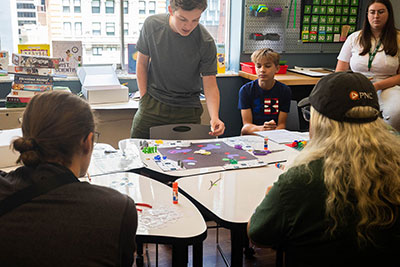
Throughout the week, students used programs such as:
- VRoid Studio to create avatars
- Generative AI to develop interactive stories
- Canva to design a gaming board
- Tinkercad to construct 3D-printed game components and pieces
“Many students discovered how AI could enhance their creativity rather than replace it, particularly in storytelling and game logic,” Pascarella said. “Several also quickly picked up 3D modeling skills faster than expected, leading to more complex designs than we had anticipated.”
For Arrigo, the process was thrilling. “I loved having a lot of creative freedom and the amount of support and encouragement from the instructors,” she said.
Using Trial and Error in Creativity
Donald Marinelli, Ph.D., director of the Center for Experiential Narrative Technologies at Point Park, and Chris Gaul, assistant director, visited the camp on Monday, guiding students through the storyboarding process and discussing generative technologies with them. On Friday, they returned to the camp to see the final prototypes of the games.
“The most exciting discovery was watching the iterative process unfold in each student," Marinelli said. "There is a tendency to rely on first thoughts and efforts. Realizing that creativity is a trial-and-error process represents true maturity.”
Marinelli explains how designing a board game relates to other fields: “Creating a board game requires problem-solving, strategic thinking and user-centered design — all skills applicable to software development, urban planning, understanding user needs, and accepting and adapting to feedback.”
That feedback came from instructors and other students alike. “The camp fostered a strong sense of collaboration and innovation,” Pascarella said. “It was exciting to see students take ownership of their projects and blend artistic expression with emerging technologies in meaningful ways.”
Each student left the camp with a boxed edition of their own game and, more importantly, the tools they need to continue to bring their ideas to life.


